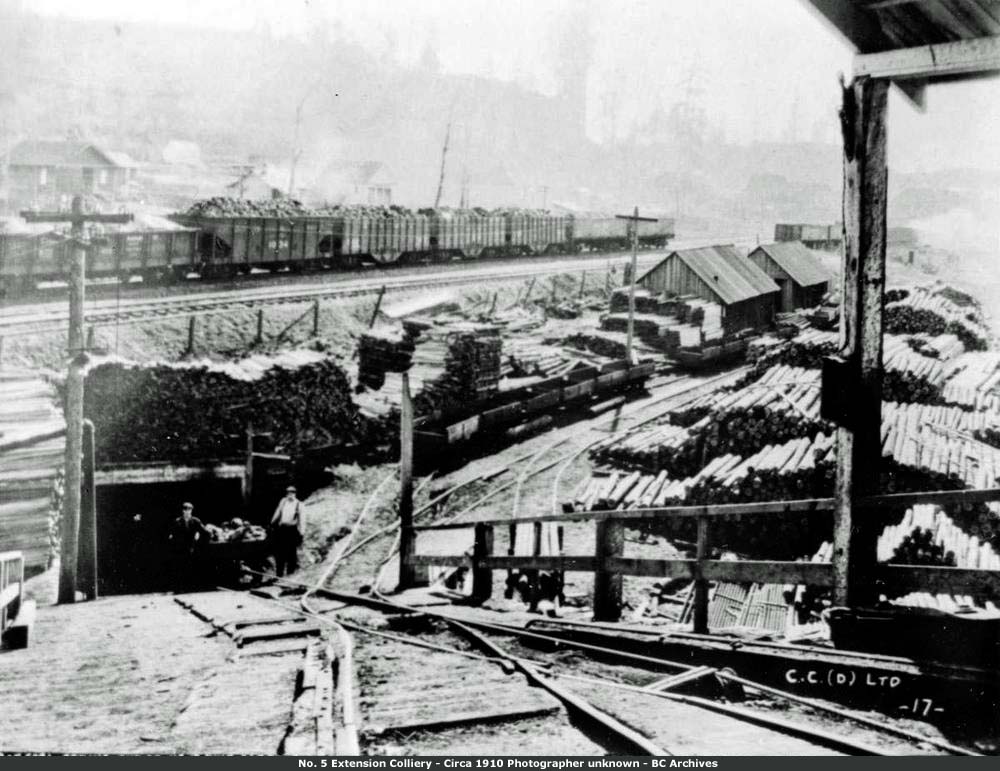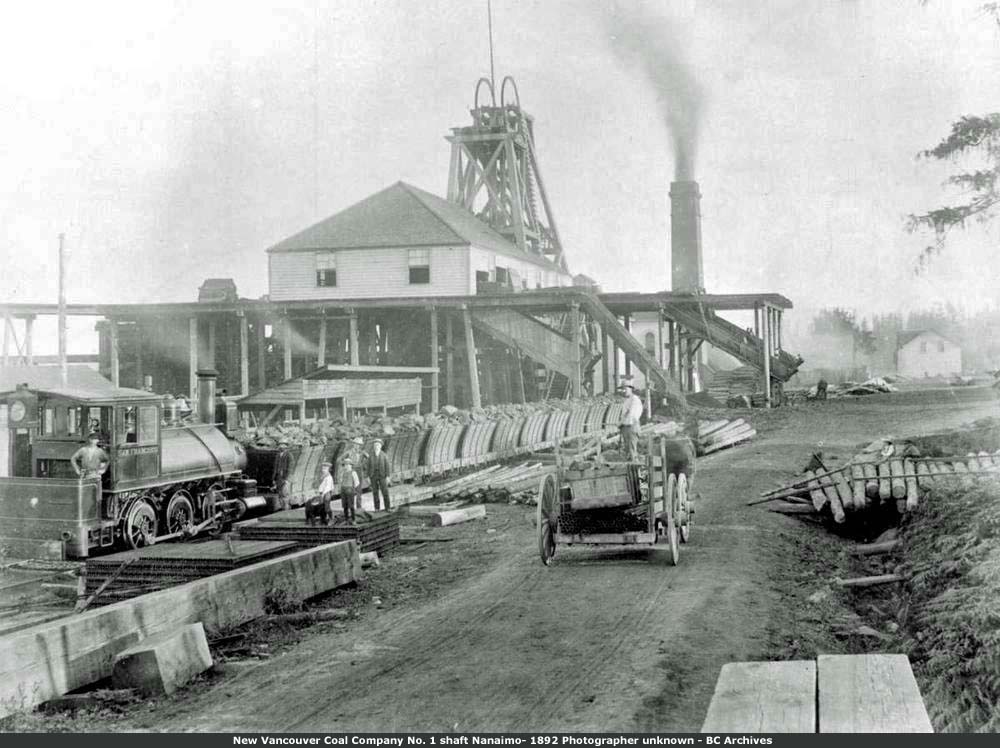The growing importance of the coal industry at Nanaimo incited others to search for coal, among them the late Hon. Robert Dunsmuir, who discovered extensive deposits at Comox and Wellington. The Wellington mines were discovered in 1869 and were worked successfully for many years, being finally abandoned in 1900 for the more promising measures at South Wellington and Extension. The Extension mine was only opened in 1898, but development had been so rapid that the output aggregates 2,000 tons per day, and this, through the admirable plan of working, may be easily doubled at any time. Diamond drill borings demonstrate the fact that there is coal enough to supply 2,000 tons a day for 100 years. Three inclines were sunk at different points, all converging to a main tunnel, which pierces the earth for over a mile, becoming the main highway of the mine. The Extension mines are eight miles from the town of Ladysmith, a splendid harbor on Oyster Bay, where the Wellington Colliery Company (which owns and operates these mines, as well as those at Alexandria and Comox) has bunkers and wharves that will accommodate and load five of the largest steamships at one time. The Alexandria mine, which is also close to Ladysmith, is producing about 800 tons a day and is being systematically developed.
The New Vancouver Island Coal Company located at Nanaimo had six shafts on the property, numbers 1 and 2 in the city of Nanaimo, the Northfield, the Southfield, the Harewood, and the Southfield No. 2, all within a radius of six miles from the city and connected with the company's shipping docks by a railway.
Following the discovery of coal on the Island at Fort Rupert in 1835, coal was the primary resource that lead to the formation of Nanaimo as we know it today. In the early years following discovery, coal mining was originally carried on by the legendary Hudson's Bay Company (HBC). But in 1862, the HBC disposed of its coal lands in Nanaimo, selling all 6,193 acres of land to the Vancouver Island Coal Mining and Land Company, a company based out of England. In a business move to protect stake holders, the company changed its name in 1889 to the New Vancouver Coal Mining and Land Company (NVCM), cementing its stake as one of the major players in Nanaimo's rich coal history. The NVCM operated over a large area on Vancouver and adjacent islands, owning thousands of acres. The Number 1 Shaft was Nanaimo's principal coal mine located in the heart of downtown with its entrance at the foot of Dickson Street, close to the edge of the harbour. At one point, about 1,500 men were employed in these mines, a figure which represented a large portion of the City's 8,000 inhabitants.
Following the discovery of coal on the Island at Fort Rupert in 1835, coal was the primary resource that lead to the formation of Nanaimo as we know it today. In the early years following discovery, coal mining was originally carried on by the legendary Hudson's Bay Company (HBC). But in 1862, the HBC disposed of its coal lands in Nanaimo, selling all 6,193 acres of land to the Vancouver Island Coal Mining and Land Company, a company based out of England. In a business move to protect stake holders, the company changed its name in 1889 to the New Vancouver Coal Mining and Land Company (NVCM), cementing its stake as one of the major players in Nanaimo's rich coal history. The NVCM operated over a large area on Vancouver and adjacent islands, owning thousands of acres. The Number 1 Shaft was Nanaimo's principal coal mine located in the heart of downtown with its entrance at the foot of Dickson Street, close to the edge of the harbour. At one point, about 1,500 men were employed in these mines, a figure which represented a large portion of the City's 8,000 inhabitants.




